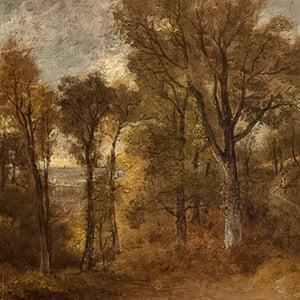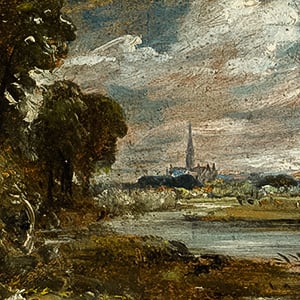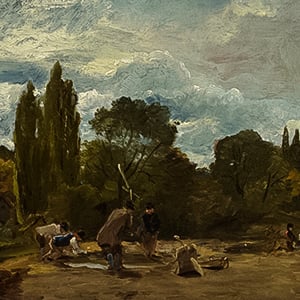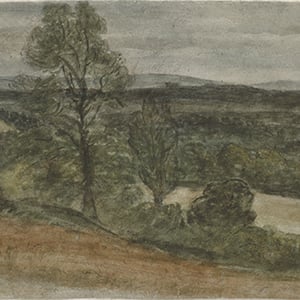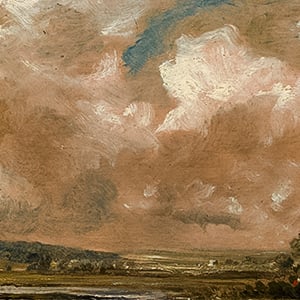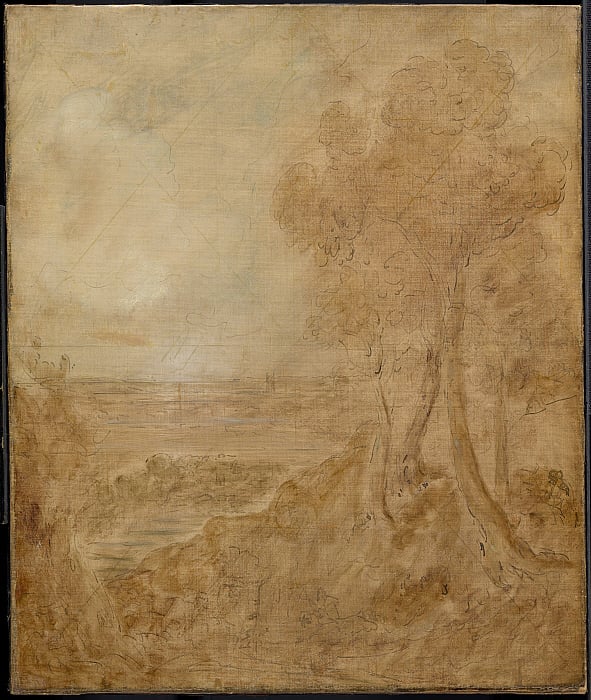
John Constable
English, 1776–1837
Sketch for "Dedham Vale"
c. 1827
This sketch, made in preparation for Constable’s six-foot painting Dedham Vale (1828), now in the collection of the National Gallery of Scotland, reveals the process of creating a finished work from an early idea. The artist planned the composition in pen and ink and then added brown and white washes of oil paint to establish areas of light and shade. Finally, he drew a grid of diagonal lines in pencil to enable the transfer of the overall composition to a larger canvas.
| Medium | oil, ink, and graphite on canvas |
| Dimensions | 23 7/8 x 20 in. (60.7 x 50.8 cm) |
| Object Number | 2007.8.43 |
| Acquisition | Gift of the Manton Art Foundation in memory of Sir Edwin and Lady Manton, 2007 |
| Status | Off View |
Image Caption
John Constable, Sketch for "Dedham Vale", c. 1827, oil, ink, and graphite on canvas. Clark Art Institute, gift of the Manton Art Foundation in memory of Sir Edwin and Lady Manton, 2007.8.43
Select Bibliography
EUROPEAN PAINTINGS CATALOGUE ENTRY
Provenance
[Heinemann Gallery, Munich, 1906–10, sold to Buhl, 16 Aug. 1910]; Dr. Franz Buhl, Deidesheim, from 1910, returned to Heinemann; [Heinemann Gallery, Munich, sold to Desclosières, 20 July 1911];¹ R. Desclosières, Paris (from 1911); Desclosières heirs, by descent, sold to Van Haeften, 1994; [Johnny van Haeften, Ltd., London, sold to Manton, 1994, with Deborah Gage ( Works of Art) Ltd., London, as agent]; Sir Edwin A. G. Manton, New York (1994–d. 2005); Manton Family Art Foundation (2005–7, given to the Clark); Sterling and Francine Clark Art Institute, 2007. 1. This information comes from the Galerie Heinemann Online website, http://heinemann.gnm.de/en/artwork-2099.htm, where this work is recorded as “Dedham Vale, Grisaille,” acquired 22 Apr. 1906, stock no. 8868. According to Leslie Parris (Constable. A New York Private Collection. Supplement, 1998, p. 32) there is a Heinemann Gallery label on the back of the work with the number “8868.” This label is either no longer present, or it may be hidden underneath the adhesive paper covering the back of the work.

